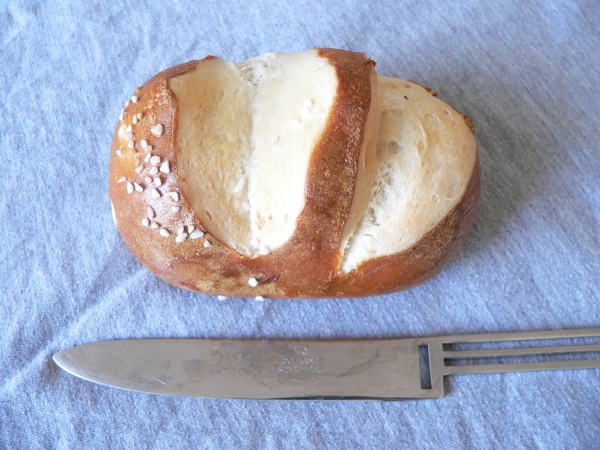Facts About Lye roll
Lye rolls are a delicious baked treat popular in Germany, Austria, and Switzerland. They derive their unique flavor and texture from being dipped in a lye solution before baking. In German, any baked good that's been dipped in lye is called "Laugengebäck." You might be most familiar with this process from pretzels, but there are also lye-dipped rolls and buns known by various names, such as "Laugensemmel" "Kastanie" "Laugeweckle" "Laugestängle" "Laugenwecken" "Laugenbrötchen" or "Laugenstange." In Austria, they're called "Laugenweckerl" and in Switzerland, they're sometimes referred to as "Silserli" or "Laugenbrötli." In some parts of Asia, they are labeled as "laugen rolls."
To achieve their signature browned appearance during baking, lye rolls are coated with a high pH solution, typically lye. If you don't have lye, you can substitute baking soda or washing soda, though the effect will be less pronounced. This same glazing technique is also used for making pretzels, one of the few baked goods outside Germany to utilize it.
Traditionally, lye rolls and pretzels are sprinkled with salt, especially pretzel salt. Occasionally, they may be topped with baked cheese, although this is less common. People often enjoy these rolls sliced in half and buttered. Other topping options include poppy seeds, sesame seeds, and various other seeds instead of salt.
If you're interested in making lye rolls at home, here's a brief overview: the entire process takes about 2 hours, including 25 minutes for baking. This recipe yields 12 rolls. You'll need unbleached all-purpose flour, active dry yeast, salt, sugar, and warm water for the dough. To poach the rolls, you'll use a solution of water and baking soda, and then sprinkle them with coarse salt before baking. Enjoy your homemade lye rolls!

 Slovenia
Slovenia